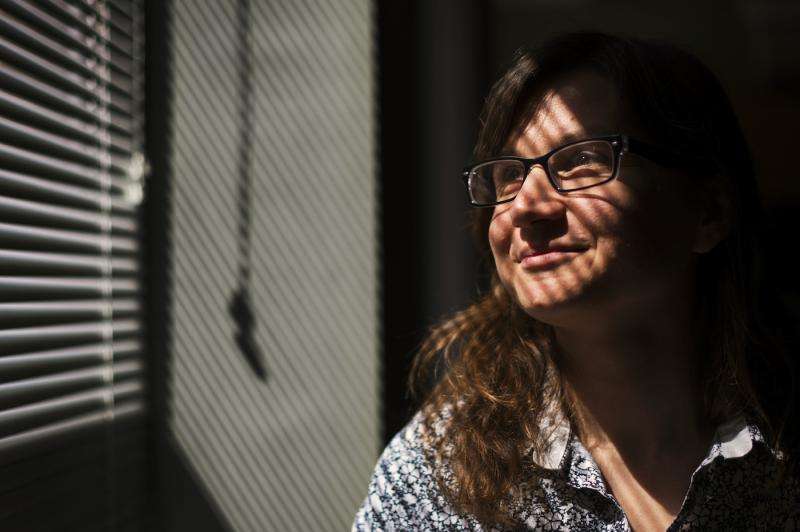Researcher studies the types of visual judgment errors that referees, coaches and players make

As a new football season approaches, so, too does an air of anticipation and hope. It's still anyone's game. But there's one thing we can already bet on—at some point in almost every matchup, people are going to disagree about what they saw.
A National Football League official who works 17 games in the upcoming season will call about 2,200 plays. That's a lot of opportunity to stoke the joy—or anguish—of fans. And according to a new study by Northeastern post-doctoral researcher Anna Kosovicheva, the types of visual judgment errors that referees, coaches, and players make are likely to be unique to each person and consistent over time.
Kosovicheva's research, published recently in Current Biology, found that people have a "signature" of error when trying to judge the location of a briefly seen object. They consistently view objects as being one degree of error, or about one finger-length, away from where it actually appeared.
To test this, she designed several computer-based tasks for a total of 14 participants, five of whom made thousands of judgments over the course of several months.
One task involved a target that popped up briefly on the screen. Participants were instructed to quickly navigate the cursor and click where they thought the target had been. Another task used an eye tracker to record a person's gaze as it darted to a point on the screen where a target appeared and then quickly disappeared.
The results show participants make remarkably consistent errors across multiple tasks. One person may have always thought the target is lower than it really was, for instance, while another person might have always judged it to be more to the right.
"No matter how you test them with the host of different methods, and no matter if you test them several weeks later or several months later, they still show the same pattern of errors," Kosovicheva said.
This discovery has wide and varied implications. For example, a line judge in a tennis match may always think the ball landed slightly to the left of where it actually hit the court. Someone who frequents a shooting range might consistently aim a little too low to strike the target.
What causes these systematic errors? Kosovicheva said she can't know for sure based on this study, but a likely culprit is anatomical differences in visual processing at every stage of the visual system.
"If you go from the retina to the visual cortex, you'll see lots of individual variation in anatomy," Kosovicheva said.
To process what we see, our brains map out the objects we are looking at. And everyone's map is arranged a little differently. This might explain why individual judgment errors are consistent across varying tasks and scenarios, and why people can't correct their error signature, even when they are made aware of it.
"I myself have done the task loads of times, and I haven't been able to manipulate my responses in a way to make myself better at the task," Kosovicheva said. "If it arises at an anatomical level, no amount of trying to tell people that you made an error will necessarily fix that."
However, the study found that although people make consistent mistakes individually, the average of their collective judgements tends to be quite accurate. So this football season, when fans, coaches, and players disagree about what they saw, seven officials per game will use their best judgement to make the final call. And seven sets of eyes working together are more accurate than one working alone.
"It helps to have multiple observers in that you have different biases canceling each other out," Kosovicheva said.
More information: Anna Kosovicheva et al. Stable individual signatures in object localization, Current Biology (2017). DOI: 10.1016/j.cub.2017.06.001




















